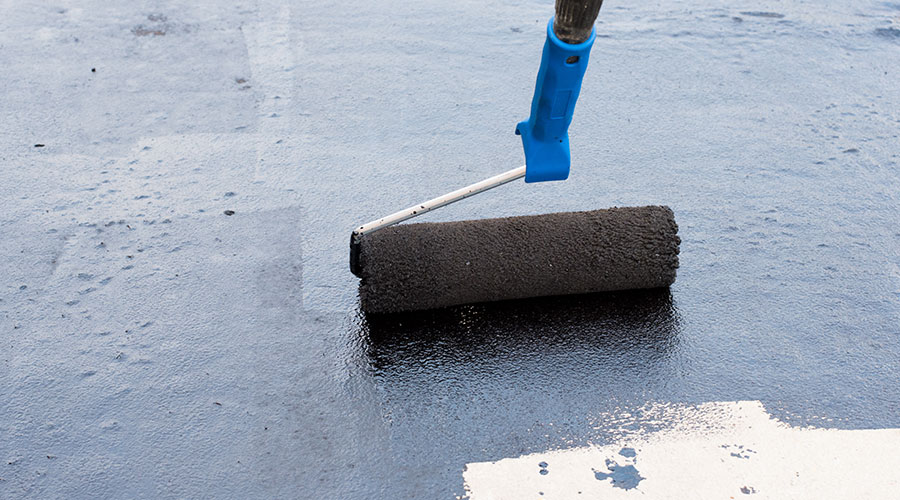Roofing Maintenance: Inspection Checklist
As the evaluation begins, the inspector reviews surface conditions and looks for issues such as coating deterioration, loss of the protective coating, and stained surfaces, which indicate previous ponding water. Ponding water is defined as any standing water remaining on the roof surface 48 hours after a rain. Inspectors must pay particular attention to existing ponding water that could void the manufacturer's warranty.
The inspector also should record other issues, such as: shaling ballast that could damage and puncture the membrane; debris on the roof; and significant levels of dirt within the stone ballast. Managers must take all surface conditions into account when developing final condition ratings.
Inspectors next should check membrane conditions. The roofing membrane is the weatherproofing layer. Typical membranes within built-up roofing systems contain multiple plies of a felt material between coal-tar pitch or hot asphalt. The benefit of a built-up roof system is the redundancy, with multiple plies of weatherproofing protection.
Typical problems within a built-up system include blisters indicating the system contains entrapped moisture, alligatoring, fishmouths, and voids, which could be caused by a lack of bitumen within the plies and bare or exposed felts.
Single-ply roofing systems primarily consist of ethylene propylene diene monomer (EPDM), thermoplastic polyolefin (TPO), and polyvinyl chloride (PVC) membranes. In these systems, inspectors must be very aware of membrane deficiencies because the system has only one layer of protection. Typical conditions that affect single-ply systems are open lap seams, thermal-membrane shrinkage with EPDM membranes, and plasticizer migration with PVC and TPO membranes that causes brittleness. Fastener backout and punctures in the membrane are also typical deficiencies of PVC and TPO systems.
Inspectors should pay close attention to perimeter edges, copings, base flashings, counterflashings and area dividers. These areas require a great attention to detail during construction and, as a result, tend to become more problematic than other areas of the roof as time passes. Inspectors also must check all flashings to ensure they are properly sealed and free of voids, punctures, and blisters, and that no open laps exist.
They also should check:
- sealants for voids and deterioration at every coping joint and coping end
- termination bars and counterflashings to evaluate current conditions
- flashing and sealant conditions around every penetration, rooftop unit, skylight, and any other projections.
Inspectors also should pay particular attention to drains, scuppers and gutters to ensure water has a route to exit the roof. On a typical low-sloped or flat roof system, the roof should have a slope of no less than inch per square foot to ensure adequate drainage. Signs of inadequate drainage include standing or ponding water on the roof surface. Staining on the roof surface indicates previous ponding.
Inspectors should check all drains and remove any debris, and they should ensure all drain strainers and bolts are present and tight. They also can check drains for adequate flashing and sealants, as well as scuppers and gutters to ensure they are free of debris, properly flashed, and sealed.
Other components inspectors should evaluate are the conditions of rooftop walls, such as parapets, penthouse walls, and the walls at the roofline. They should check the transitions at the roof wall tie-ins because they tend to be particularly problematic. Far too often, organizations pour money into making roof repairs when the water actually is entering into the wall system and then finding its way into the building.
Related Topics:














